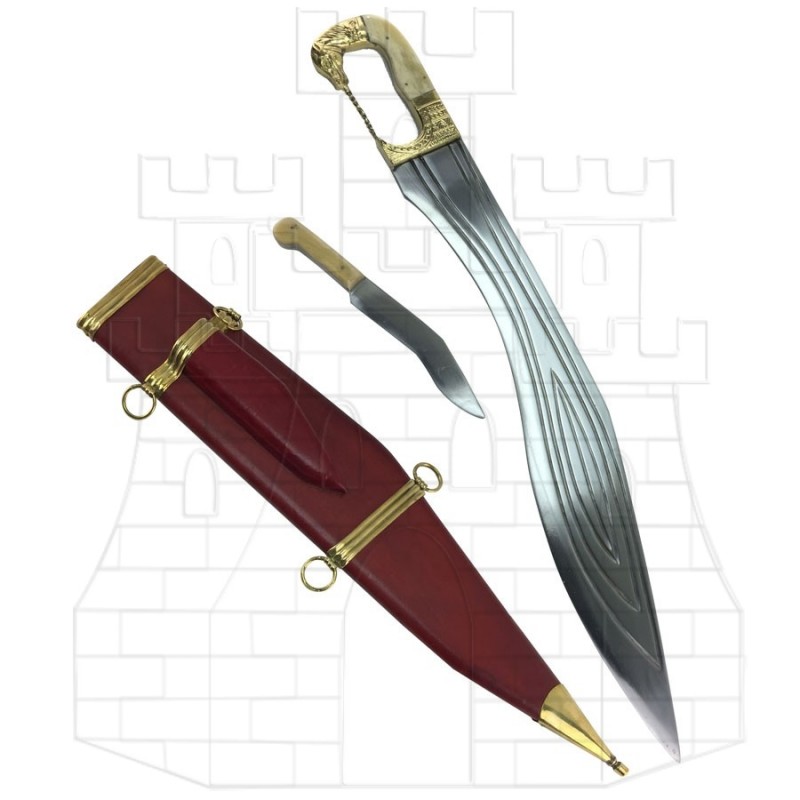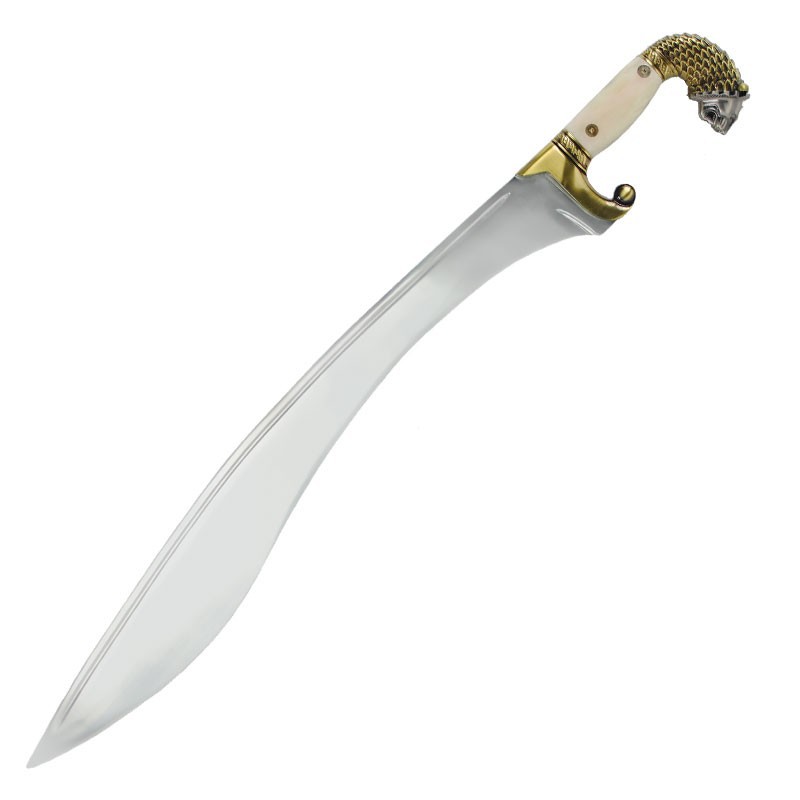What is a Falcata?
The falcata is a traditional sword from pre-Roman Iberia, used by Iberian cultures. Known for its distinctive design and effectiveness in close combat, the falcata has captured the attention of historians and fencing enthusiasts over the years.
Main Characteristics of the Falcata
- Curved and Asymmetric Blade:
The falcata is characterized by having a concave, curved, and asymmetric blade. It generally features a single edge that curves forward before returning towards the axis of the sword. This morphology places its center of gravity in the middle of the blade, thus maximizing cutting force.
- Grooves and Decorations:
Some falcatas have grooves on the non-cutting side, reducing weight without sacrificing effectiveness. They are often decorated with damascening, incorporating silver threads in intricate designs.
- Handle:
The handle is designed for a single hand and is typically offset, allowing for a comfortable grip. Some handles are decorated with materials such as bone or ivory and may have symbolic pommels, like those of a horse or a griffin.

Use in Combat
- Efficiency in Close Combat:
Thanks to its design, the falcata is particularly effective in hand-to-hand combat. It allows for clean and devastating cuts, adapting well to combat with a shield and taking advantage of offensive techniques like thrusts and diagonal cuts.
- Customization:
Each falcata was often a unique weapon, tailored to the warrior's personal needs and preferences. This not only gave them effectiveness but also social status, serving as a symbol of the Iberian warrior.

Origin and Historical Evolution
- Theories of Origin:
The falcata has multiple theories regarding its origin; some suggest it is derived from Hallstatt culture knives, while others link it to Hellenic weapons like the *makhaira*.
- Development:
Over time, the falcata evolved, becoming lighter and more practical for ground combat, reflecting the Iberians' adaptation to changing warfare tactics.
Manufacturing Technique
The forging of the falcata involved advanced methods for its time, using quality iron, contributing to its durability and combat effectiveness. These forging processes were essential to creating a sword that met the expectations of Iberian warriors.
| Characteristics | Description |
| Blade | Curved and asymmetrical, single edge |
| Handle | Small and designed for one hand |
| Decoration | Grooves and damascening |
| Use | Close combat and offensive use |
















